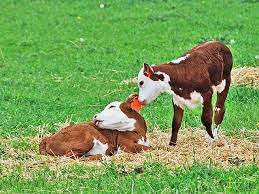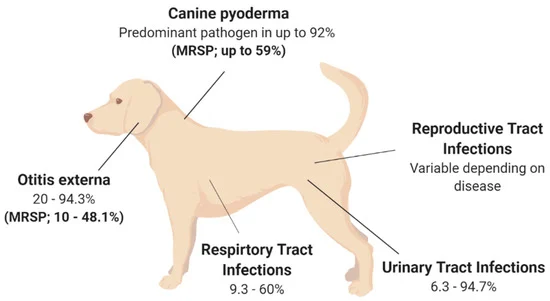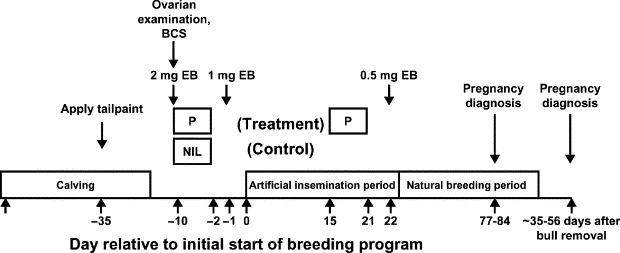This disease has many technical names: contagious pustular dermatitis, contagious ecthyma, infectious labial dermatitis, ecthyma contagiosum, thistle disease and scabby mouth. –This disease, which affects goats and sheep, is caused by a virus called parapox virus. These viruses live in environments such as barn walls, food containers, in pastures, etc. and can survive for a month, a year, and more. Propagation These viruses enter the animal through open wounds such as sores and often affect goats because they like to eat thorns that lead to injuries in the mouth. -Also,…
Author: Mshindo Media
POULTRY FARMING PROJECT STRATEGY (new) I Mshindo Media
1. Consider the best principles and ADVICE for your livestock farming 2. Choose the best chicken seed that suits your market 3. Think of ways to solve the CHALLENGES you identified in LIVESTOCK. 4. Do market research for your chicken before ordering. 5. Calculate your project INVESTMENT from start to finish 6. Make sure you have received proper instructions on animal husbandry before you start raising animals. Chicken Food There are five important things that a chicken needs to be healthy. They are as follows, 1. PROTEIN: It is a type of…
Better goat farming (new) I Mshindo Media
BEST GOAT FARMING Goats are animals that can be raised at low cost and are also tolerant of drought and disease, unlike cattle, because they have a small body size, they can be raised in a small area with a small workforce and even by those with low incomes. Goats can be raised for meat/milk/leather/wool and other crops as fertilizer for family use and to increase income. BEST WAY OF KEEPING :-Keep them in a good enclosure. Choose according to their characteristics and the purpose of raising (producing) meat/milk/wool.Feed them the…
Smallpox, its symptoms and how to avoid it (new) I Mshindo Media
Smallpox Smallpox is a slow-spreading viral infection that affects many species of birds, including all commercial poultry breeds. It occurs in both wet and dry forms. The wet form is characterized by a marked rash in the mouth and upper respiratory tract. The dry form is characterized by scaly, scaly skin lesions that develop into thick scabs. The disease can occur in birds of any age, at any time. Mortality is usually not significant unless respiratory involvement is severe. Avian influenza can cause depression, decreased appetite, and poor growth or…
TEN METHODS OF RAISING CHICKEN FOR BEST RESULTS (new) I Mshindo Media
Current news, dear reader of our articles and chicken breeder. We believe that you are completely fine and your project is going as you expected. If things are not going well, then continue to contact us and help each other deal with the challenges you are going through and consult further. Today we would like to provide practical education on the correct methods of raising chickens so that the breeder can achieve good results in his or her farming. 1. Capital ; Before you decide on the type of chicken to raise,…
Abortions Caused by Bacteria (new)
Abortions Caused by Bacteria: Brucellosis, Salmonella, Leptospirosis, Vibriosis Brucellosis Summary In some countries Brucellosis has been eradicated or brought under control by a programe of blood testing, slaughter and heifer vaccination. However in most parts of East Africa there has been no control or vaccination and Brucellosis is common in both humans and animals.Brucellosis in humans resemble Malaria, and is often mistaken as such unless identified through laboratory testing. Cure of Brucellosis in humans is a very long drawn out and expensive administration of antibiotics and much better avoided by controlling…
Abortion and Stillbirth (new)
Introduction A very common cause of abortion is Brucellosis, which can also infect humans. Brucellosis is an infectious disease caused by the Brucella bacteria. There are many other infectious abortions. But most labs in the country/region routinely only diagnose few causes of abortion other than Brucella (e.g. caused by bacteria or parasites such as Campylobacter, Trichomonas). However, close observation and submitting a full history together with the samples will help alert the lab on the possible involvement of other abortion agents (e.g. Rift Valley Fever). An abortion is referred to as an elective or voluntary abortion…
Silent heat I Meaning,Diagnosis,Signs & Treatment (new)
Silent Heat What is a Silent Heat? A suboestrus or silent heat in cattle, is defined as the lack of behavioural oestrus symptoms, although the genital organs undergo normal cyclical changes. The incidence of silent heat varies from 10% to 40% between different herds Silent heat is the term used when a cow which has already shown heat signs shows them again after 6 weeks or later. The regular heat period at 3 weeks is often referred to as the silent heat. The heat signs might have been weak and therefore…
Freemartinism (new)
Freemartinism This is one of the most common reproductive abnormalities, mainly congenital, affecting female cattle. It occurs when both male and female conceptus are present in the same uterus. In cattle there is a tendency for the placenta of twin fetuses to merge, thereby causing the circulatory system of the twins to become interconnected. This often affects the development of the female sex organs of the female twin probably due to the androgens of the male blood circulation. Freemartinism is the most commonly recognized noninflammatory condition resulting in infertility involving the tubular reproductive…
Epivag I Meaning,Signs &Treatment (new)
Epivag Common Names: Infectious epididymitis, Cervici-vaginitis A disease characterized by vaginitis in cows and epididymitis in bulls occurs sporadically in eastern and southern Africa, where it is referred to as epivag Epivag is a rare chronic venereal infection of cattle probably caused by a virus. It occurs in East and Southern Africa. In the 1930s the disease was rampant in Eastern and Southern Africa, prompting the creation of the world’s first national AI service to control it in Kenya. It has now become sporadic and reports are unusual. The infection…
Pyometra | Causes, Symptoms & Treatment (new)
Pyometra This condition is due to an accumulation of pus in the uterus and can occur after chronic endometritis or may result from the death of an embryo or fetus with subsequent infection by Corynobacterium pyogenes bacteria. The situation may persist undetected for some time and may be confused for pregnancy. Pyometra is a serious and potentially life-threatening infection of the uterus that causes it to fill with bacteria and pus. Many dogs with a pyometra have vaginal discharge and may feel very sick with a poor appetite, lethargy, vomiting and sometimes increased thirst or…
Endometritis in Dairy Cows Causes,Clinical Signs and Management (new)
Endometritis This is the inflammation of the endometrium (internal lining and mucus membrane of the uterus). It occurs as a result of an infection by microorganisms. Infection normally occurs during mating or around labour and delivery by such organisms as Campylobacter fetus (See Brucellosis) or Trichomonas fetus (See Leptospirosis) and other opportunistic bacteria like the Corynobacterium pyogenes, E. coli and Fusobacterium necrophorum. Endometritis often occurs following difficult or abnormal labour or delivery and/or retained placenta. Endometritis is a localized inflammation of uterine wall and usually a cause for bovine infertility.The causal organisms usually reach the uterus at coitus, insemination, parturition…
Anoestrus (new) I Mshindo Media
Causes of infertility Causes of infertility can be very many. Below some of the more common ones: Anoestrus Anoestrus is a condition where some cows do not show heat signs for a long time after calving. In this case, no ovulation takes place. The condition can be caused by an infection or inflammation of the uterus and underfeeding of the cow, especially with minerals. Anoestrus. Cows in anoestrus show no heat activity, because the process of follicle development does not lead to ovulation. Anoestrus is normal in the post-partum cow, but most dairy…
Milk fever (new) I Mshindo Media
Milk fever is a condition of mature dairy cows that occurs a few days before, but mostly immediately after calving. It is common in imported high yielding dairy cows, especially Friesian or Channel Island breeds such as Jersey or Guernsey. Milk fever does not occur in indigenous cows. Milk fever is caused by low calcium levels in the body due to the sudden onset of lactation at calving. The nutritional status of the cow in the dry period is known to influence the risk of the disease. Diets low in dry matter such as lush pastures and diets with high calcium during dry…
Retained Placenta: Signs, Cause, Symptoms& Treatment (new)
After giving birth cows sometimes do not drop the afterbirth (placenta) immediately. This can cause problems as decaying placenta tissue can cause a serious bacterial infection of the cow and if untreated the cow can even die. Normally expulsion takes place within 3-8 hours after delivery of the calf. Retained placenta is a common complication after calving; if the cow doesn’t shed those membranes within about 12 -24 hours, it’s considered to be “retained.” Call a veterinarian after 12 hours to judge the situation and watch your cow closely. dont remove…
Birth and Reproduction complications (new) I Mshindo Media
Introduction There are various diseases and abnormalities that affect the reproductive system of domestic animals. These diseases commonly result in early embryonic deaths, abortions, mummification and infertility. Following the infectious disease, animals may end up with other related conditions such as Endrometitis and Pyometra. All these result in lost income to the farmer as the animals may be unable to give birth again. Brucellosis and Q-fever are also highly contagious, and may transfer to people causing agonizing pain and sickness and very expensive medication, so paying close attention to the reproductive health of your animals is…
Animal Births/Parturition in cattle, goats and sheep I Mshindo Media (new)
Birth in livestock is a natural process and normally does not need any human interference. But sometimes there can be birth problems where the dam needs assistance from the farmer/pastoralist. The normal birth Pregnancy in cattle lasts on average 280 days. It can be one week less or up to two and a half weeks more. If the cow has twins she will normally give birth before the 280 days are over. In goat and sheep pregnancy lasts 144 – 155 days, in pigs 110 – 118 days, in horses…
Animal Diseases Diagnosis I Mshindo Media (new)
Introduction – signs of disease Animal disease, an impairment of the normal state of an animal that interrupts or modifies its vital functions. Farmers and pastoralists know that animals are sick when they notice changes in behavior such as refusal to eat, keeping to shady areas, or physical signs such as different breathing, coughing, body swellings and weakness etc. Serious livestock farmers will keep observing their animals on daily basis to make sure no such signs miss their attention. It is important to catch such symptoms at an early stage in order to treat before…



















